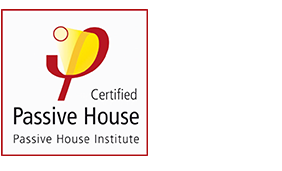
PASSIVE HOUSE certification
Origin and objective of the certification
It is a type of housing that practically does not demand or consume energy for climate control, created to maintain the ideal atmospheric conditions in its interior, achieving energy savings of between 70% and 90% compared to a conventional home. Taking advantage of the energy that can be generated by appliances, our body heat or a good solar control.
This is not a specific architectural design or specific materials, just a way of building.
The advances that have been made to the moment in the development of passive houses or PASSIVE HOUSE have been centred on detached houses. However, their utility is much greater, since this type of construction is applicable in hotels, offices, government buildings, educational centers…
The PASSIVE HOUSE certification doesn’t only anticipate the European building regulations for the next decade, but also gives in our present a guarantee for those developers who want to obtain buildings with very high thermal, energy and comfort performances. The PASSIVE HOUSE standard has become an international reference for very low energy consumption buildings (nZEB) over the last twenty years.
Fields of action

Appropriate insulation
If the structure is well insulated we don’t need heating.

High performance windows
With triple glass, high efficiency frames and fittings that guarantee hermeticity.

No thermal bridges
Our buildings have thermal bridges that are found in the windows, walls and floors where heat or cold travels through the envelope to the outside.

Good orientation and shading
The house must be oriented properly so that the sun can heat it in winter and there is good solar control in summer.

No air loss
There must be no holes in the building envelope to let air out.

Controlled ventilation system
To guarantee healthy indoor air without losing the cold or heat inside.